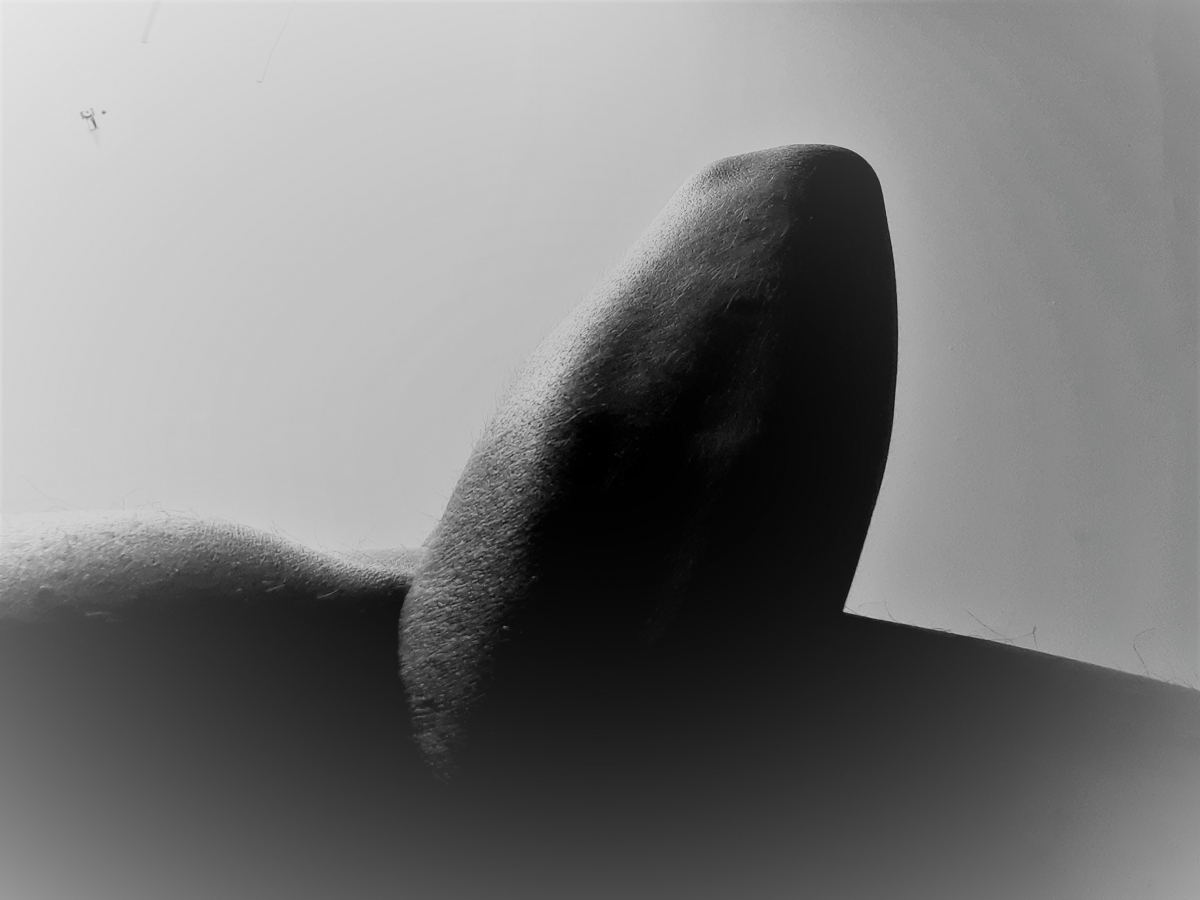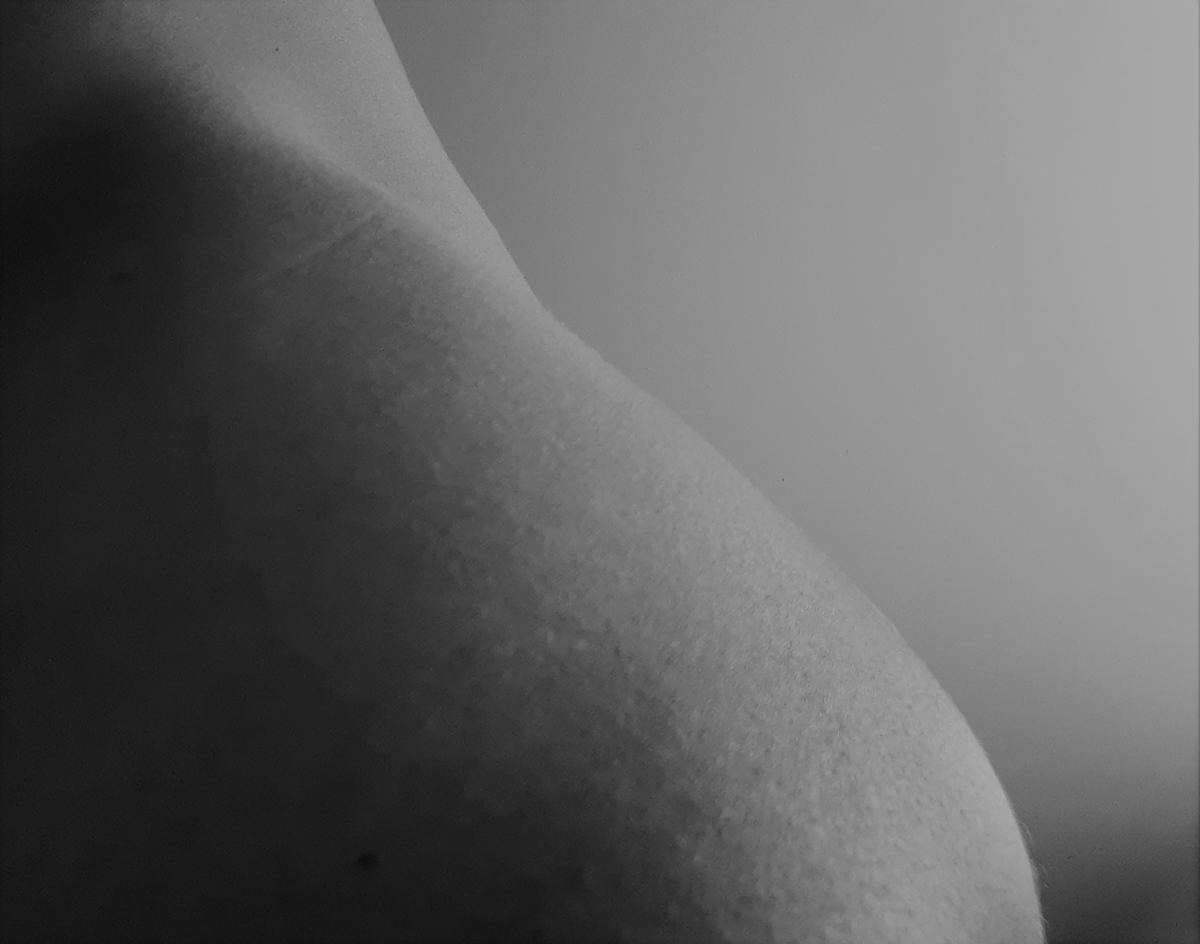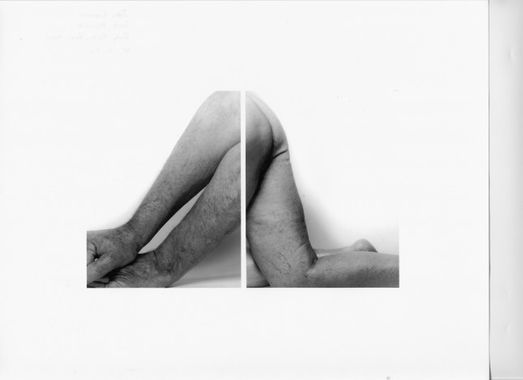May-August 2020 – Research Journal
Post-lockdown thoughts on a Research Workshop with Giorgos Sioras Deligiannis
After nearly two months of isolation, talks exclusively on the phone and touch reserved to the keyboard of my laptop, two months of practising and improvising at home, alone and lonely, apart from regular phone calls and updates with friends, and telepathic dances with colleagues, I saw an ad on Dance Opportunities for a workshop with a Greek choreographer.
This is exactly what I need to connect with artists in Greece! I thought. As I had been filming myself plainly with my smartphone and was struggling with the device, I thought the workshop could shed light on the matter.
For once, I did not google Giorgos Sioras Deligiannis’ work before sending my application or even starting the workshop. My mind was somewhere else. So I discovered every single step without prejudices or expectations. Yet, to my surprise, the workshop was not to happen just once, on Mayday, but unfold on 5 sessions (and still goes on for me now… several months later). It didn’t occur to me that some artists were still generously sharing their time, practice and art for free. Thank You Giorgos!
The workshop started on Zoom May 1stand within two hours I met about 20 people, locked at home too, in Tel Aviv, Paris, Athens, Marseille, small towns in Portugal, Italy, the French Alps and even in Uruguay. Young people, not just movers. Yet aware of their body and eager to share their experience of confinement. Eager to play oddly with their bodies and smartphones. Some already knew Giorgos, his approach and choreographic pieces. As for me, I did not suspect that using the selfie cam would impact my movement, my approach to dancing and disclose philosophical threads on the perceiving body.
https://giorgossiorasdeligiannis.com/
https://vimeo.com/siorasdeligiannisgiorgos
Before going into details, I suggest you check out Giorgos’ work in ordertoget a visual idea of his approach. It will be easier to understand the underlying notions.
What I did not suspect was the dehumanizing use or effectGiorgos is aiming at with the selfie cam. In fact, he didn’t call his project Research on Selfiesbut Research on Selfy, and the Y is not a typo. That letter hints at a deeper scope than a mirror effect, self-references, or the global narcissism and self-glorification we are used to from social media.
A few years ago, Giorgos created an artistic project called Selfy (click here for trailer). His team and himself explored the concept of identity through the prism of the relation body-image. The tiny lens of the selfie camera enabled a novel choreographic approach. Eventually, the body frames recorded by the camera were projected on a screen, offering a surprising and collective bodyscape.
One project after the other, Giorgos developed a specific research method which produces and uses unexpected and whimsical body images which change the way we perceive ourselves and the space around us.
Reframe the unexpected
His reframing method starts with seeing every captured image or “frame-identity” as movement (the appearance of something that will change). So down with the idea that the camera engraves something in time and space. We are movers and the world around us moves as well. Let’s embrace movement and consider it as something defining us but undefinable.
When I learned that his research was supplemented by phenomenology, the gaze theory and the stage of the mirror by Lacan, the yogic gazing method of trataka and the work of John Coplans, it was too much for me. Too many data. Too much for my brain right at the end of confinement. I so often feel overwhelmed by a relentless flow of data, news, text messages, email, radio, newsfeed, ads, Facebook. Fortunately enough I do not watch TV. Still. I was submitting to a new stream of info and human connection.
Surviving the confrontation with terminology, I delved delightfully into the practice. So instead of insisting on concepts that other people will explain better than I, I shall present images. From John Coplans first.
Interesting these adjoined fragments serving as a portrait. Almost born out of debris from the World Trade Center fall and blown up bodies. They tell about corporeality, the aging body and remind us that we do not see with our eyes but with our mind (to quote the photograph John Coplans).
So technically, what we did with Giorgos was selfying parts of our bodies, with a smart phone on the ground in order to explore new perspectives and different positions. And from an awkward start, I shifted to press the button with my toes. And from still images to moving images, the video functionality came in use as well.
Out there!
We started walking around the phone while gazing into it. From this stage on, it matters to point out that we were invited to gaze straight through or beyond the screen, relaxed, not to look at ourselves, not to narrate anything with our faces, just eyes open and no show of intention. We also reproduced choreographic moments or moves that Giorgos explored with his team. A few sessions later we left our homes to research in public space.
What does it mean to walk around town with the selfy-cam on? I used to see this as so not living the moment, as a preposterous act of urban stress, walk and talk on the phone, shop and skype with your friends, so in my first experimentation of filming myself outside [but again this is not the correct wording, I should say researching with the selfy cam outdoors], I walked with the phone as an extension of my body (and it was hard for me, holding it in a hand towards the pavement, the road, holding it close to my eyes looking at the sky, sliding it on my limps to replace my gaze with the lens). And looking at my video sketches is dizzying.
But this was not what Giorgos was asking. On the contrary. We were not here to study or learn cinematic narration, no. We were here to use the self, in the middle of the screen, as a silent and unemotional gazing witness, and narrate something in the frame.
The idea was to create a narration out of our surroundings or a situation. And the secret trick was to manage to show this without being demonstrative or gross, just by disclosing our relationship to the architecture or urban elements (for the participants using the city as a partner).
Research workshop on Selfy during quarantine from Giorgos Sioras Deligiannis on Vimeo.
What some of us acknowledged is how uneasy it can be to practice with a phone, to integrate it in a dance. In the first days we struggled with our different tasks: wanting to be natural, or just exist in front of a selfie cam, filming ourselves without judging ourselves, looking at a double chin, looking at frowning lines on the forehead. Too often when I practised in my neighbourhood, I was worried passers-by would question what I am filming and if I was filming them. (Which I was doing, e. g. when filming behind me a masked and massive queue at a bakery and other grocery shops on a Sunday morning, which was a total rarity at the time. Three months into it, we became very much accustomed to waiting with masks outside.)
Private space vs. public space?
Because it’s worth reminding you that this workshop took place in May 2020, when we were still locked down at home. I used my daily one-hour walk granted by the government to explore my interrelating to my surroundings. And I learned that arriving with a precise idea of what I wanted to narrate (like the police shouting at people by the sea because they ought not to be sitting on the rocks and contemplate the sea, for fear they fuel the pandemic…) would not work. It would just be anecdotal. Since it’s really more about interrelating, exploring the bond, our place in this world, than interacting and doing.
Time and again, Giorgos was available, outside workshop hours to advise us, give us buoys in our sea of questions: what is our intention? Let’s investigate one thing at a time, what is our placement in public space, in private space, our relationship to architecture? We also had the opportunity to discuss what research is. To him, it would be maintaining the intention of not knowing, rather than arriving with certainties.
Task: walk in town, cross the street, go shopping, and
Stay in the unknown
Work in the frame
Observe
Identify
Frame
All of this prompted questions and discussions about the notion of public and private space. I could wax lyrical about it, but at this stage I feel there is no such thing as private and public space anymore. We “share” or disclose our private lives to the world and we use public places like private ones. The use of the mobile phone started blurring lines for me, about 20 years ago, when people starting talking privately on the street, like we would care for their daily issues. The recent lockdown and frenzy to “work from home” and take workshop from home completed something politicians could not have achieved before. So I shall not insist on this chapter for now.
I am much more interested in the talks we had about the perceiving body, about the human sense of self in an era where we are not allowed to greet with touch anymore. In a moment where the world was compelled to stay home (when they had one) and to not socialise or share in real life. All the better for Netflix, Amazon, Zoom, Pornhub and the likes. But we are mammals and need touch and real relationship to survive – whatever the background, walks of life or language. I’m digressing but it’s tragic and worrying, all the more when we are dancers needing freedom of movement and physical touch for work and a happy living.
The perceiving body…
The novelty for me was the notion of non-body and considering the body through the prism of technology. How the digital affects durably my perception of any reality? During my coexistence on planet Earth, with other human beings, how much is my nervous system affected by the massive use of the Internet and screens, seen as a blessing at times, when everyone is cut from the outside world, yet seen as the devil when I perceive frequencies and vibration impacting my body and my mood?
Nearly everyone was enthusiastic about the workshop as it also enabled us to talk about regional differences in tackling of the Corona Crisis. Due to strict confinement measures, Paris was an empty city. A participant noticed that her focus was redirected on small details in public space. Details usually smothered by human presence. For my part, I noticed that after 50 minutes, my body was telling me to go home. I was feeling a threat. After an hour outside, I would become an outlaw. I saw many people changing the time on the self-authorisation we had to fill in in order to go outside shopping, taking exercise, etc. Was is the fear of being told off, the fear of paying a fine of 135€, the fear of getting sick? Several months later, while living with a virus and absurd rules prescribed by a government I did not vote for, I feel treated like a child (which was not the case in Germany. There it was clearly communicated “Let us stay at home” as a group and not via paternalist and guilt making attitudes of “Stay at home or you become a potential murderer”).
Feeling guilty?
Nowadays the feeling of guilt (which i don’t feel we need after centuries of Judaeo-Christian doctrines) is being heightened and closely intertwined with the one of responsibility. I am not talking about self-accountability but more of a group responsibility pushed to an extreme and thus depriving us of critical judgement. I so admire places like Tel Aviv and Athens, where the inhabitants took to the streets to protest, with a mask and keeping distances. The only cause for invading the streets in France the day after the end of lockdown – and which turned out a massive chaos, similar to the teeming human energies on café and bars … compelled to close again 4 months later – was the strangling of George Floyd and the Black Lives Matter movement. Apart from that epiphanic moment of awareness, protest in France is out of the way. We only sign online petitions. The yellow vests are sporadically enlivening roundabouts but too many nod silently before authority and death.
Eventually, for the sake of a healthy relationship to myself, and resistance to an authoritarian lifestyle which does not make sense with my thinking, I decided to force myself to stay longer outside, walk for an hour and a half, be strong and anchored and connect with trees and rocks and real elements of nature.
Deeper in the practise of gazing, selfying and looking at a body from another viewpoint, watching other bodies through a screen arose questions like “Where does my body end and the space begins?” Indeed, what are the actual limits of my body? Is it just one meter, the safe measure in France, or 1,5 m like in Spain and 2 meters in other places?
Gazing & Expanding
According to Giorgos, the act of gazing expands the notion of the self. In the process we let go of something, we give up our memory, we go beyond the memory of being human, so the notion of identity drops out. This is what the process of dehumanization is about and the latter starts when we distinguish between portraying the user of the selfy and portraying the relation the user maintains with their space.
I spent quite some time researching about the non-body. I found out that Lucretius had already done some writing about various types of bodies including the astral body and the etheric body. Centuries later Arthur Powell – a theosophist whose Wikipedia page is a bit light and condescending in English and non-existent in French… – coined the concept of shadow limb to describe an arm or leg which had been amputated, but remained existent for the person which underwent the amputation. This limb is alive in their mind, and hence in their reality. So one person’s reality perceives physical and chemical boundaries differently.
Without taking you too deep in esoteric notions, some of which antagonise depending on the current, I find it relevant to question the various layers or possibilities of perceiving matter and contemplating our bodies, in an epoch which celebrates The Body as a temple, as a paramount tool to live blissfully. There might have been a radical shift with the spread of the pandemics, but before it was all about taking care of our bodies, experience fireworks in The Body, celebrating (or disparaging) its abilities, shapes, skin-colour, performances, capacity to orgasm and the likes. For me, as a non-binary dancer and a survivor of rape and incest, I consider the item “brain” as a part of the body and the body not an inanimate material. The Body feels and think and decides as much as the mind, the cells, the skin, etc. It is a whole and Body-Mind are one.
But what I realised with this workshop and which I was starting to question with my solo BEYOND is the existence of the self – outside the body. Not just in the identity shaped by outer elements and assigned by the capitalist cis-tem we live in, but in the energies around.
And that is when quantum physics entered the game. We were discussing how we act or feel different in the presence of others, even subconsciously. The awareness that we are being looked at changes something in us. Someone mentioned the two slit (or double slit) experiment. What is this? It is a scientific test from 1801 by Thomas Young showing that even the smallest part of matter change their behaviour if they are being watched. Just amazing, particles producing waves are changing their itinerary according to the amount of light and density in space. (You will find a link for a nice video at the end of the article.)
Of course every performer or stage person knows that they will be or feel stronger when there is an audience or a camera or an outside eye. I even had the opportunity to sense the gaze of partner during telepathic dances done during confinement. Still, discovering that even invisible and tiny electrons change their path when they are observed implies that they sense something. It means that invisible and smallest particles around us are subject to change, from their own will in a way.
In the bigger picture, we humans only notice and complain about the big changes (climate change, the melting of the ice, etc.), but we do not seem to be noticing how the invisible and the frequencies around us are changing too, and how they may impact us and our health. (Or if we do and say it out loud, we are mocked… or censored.)
I find this topic fascinating and ponder about our future. Transhumanism for instance is frightening me. Of course I can understand and respect the idea of improving medical condition. But it’s not just about metal plates, pace-makers, bones and limbs replacement. It’s also about integrating sim card or memory cards in the brain. It’s about letting computers change our memory and hence our identity? The use of nanotechnologies to enhance animal first (because it tested on mice) and human capacities is also paving the way to letting the machines guiding not just our bodies and senses, but also our thinking.

Body Collages from Quarantaine Selfy Research Workshop by Tzanos Mazis
How many people are aware that human beings are being transformed or framed, already? that Facebook is funding research labs on how it will be possible to give instruction to several machines without any physical contact?
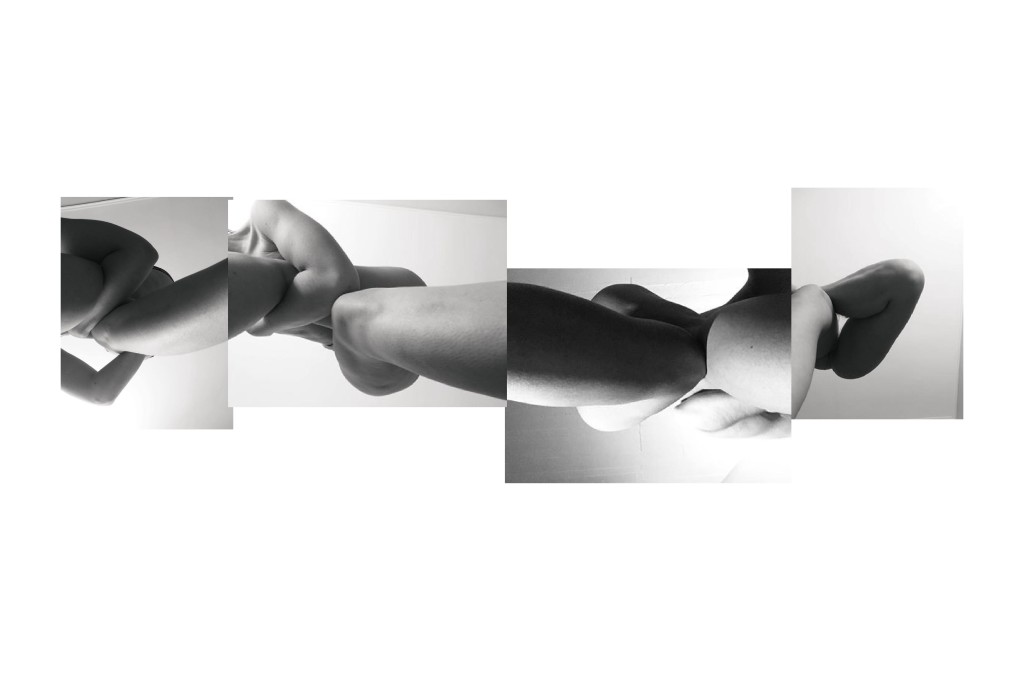
How many people are now seeing their lives subconsciously according to the prism of Facebook, or other social networks? The act of making a picture or sharing a joke is often seen according to the way it will be liked or popular around the world. So there is a terrible loss of critical thinking, because now we are seeing the world in its immediacy and through an emotional and possibly gratifying scope and not an authentic inner feeling which might need stepping back for a minute or more.
I am so thankful for all the “free time” allocated by the economic crisis and the coronavirus. Some of my shows and festivals were cancelled, and it was terribly frustrating, but in the end, I had the opportunity to go deeper in the practice, work on the look or gaze or eye functionality, so different when you’re a dancing or acting, research and refine the direction I wish to follow in the arts and dance.

Joseph Beuys said that ART = CAPITAL, and in order to survive in this world killing itself in an overdose of capitalism, I choose to continue giving value to the arts and the sharing of it. Human beings need them. My medium is dance, Contact Improvisation and butoh and I can tell how participants are changed after a class. The smile on their face is enough for me. At the end of a class recently, someone shared how they needed free spaces to dance in order to forget how the current situation is crushing us. I will continue teaching Contact Improvisation and Butoh and I am lucky the places I work with are not closing down and fighting for survival because what we do is making people healthier than being muzzled and eventually smothered by masks.
So what I do take with me, from the Selfy Workshop with Giorgos Sioras Deligiannis is the gazing practice, the reframing and the reminder that “dance is not about me”. I am not the topic of what I create. The topic has to do with how I deal with my surroundings. It’s all about my (or my performer’s) relation to space and its architecture. To me, it also is about the invisible and the caring to reveal what we don’t necessarily want to see. Artists, performers, etc. are conveyors of happiness and strangeness. I want to defamiliarize (as Shklovsky used to say) what we think we know.
Gazing in the space between
In fact, it means that I cannot dance IN landscape, but WITH landscape. If I work in a lush garden and do not relate to the bush or flowers around me as so many individual dance-partners, I shall disappear. My dance might look “nice” for some, yet this dance would be irrelevant for others. However if I highlight the relationship between these various elements through my movement, my dance will be anchored in space. And this reminds me of the frame-dance, the paradox of existence and ghosts sensing.
So for now, my practical dance research question is how can I offer new perspective on the space between? How can I serve an inclusive and non-binary vision of the world, a queer and healthcological way of arts? What do I need to reframe to serve this purpose?
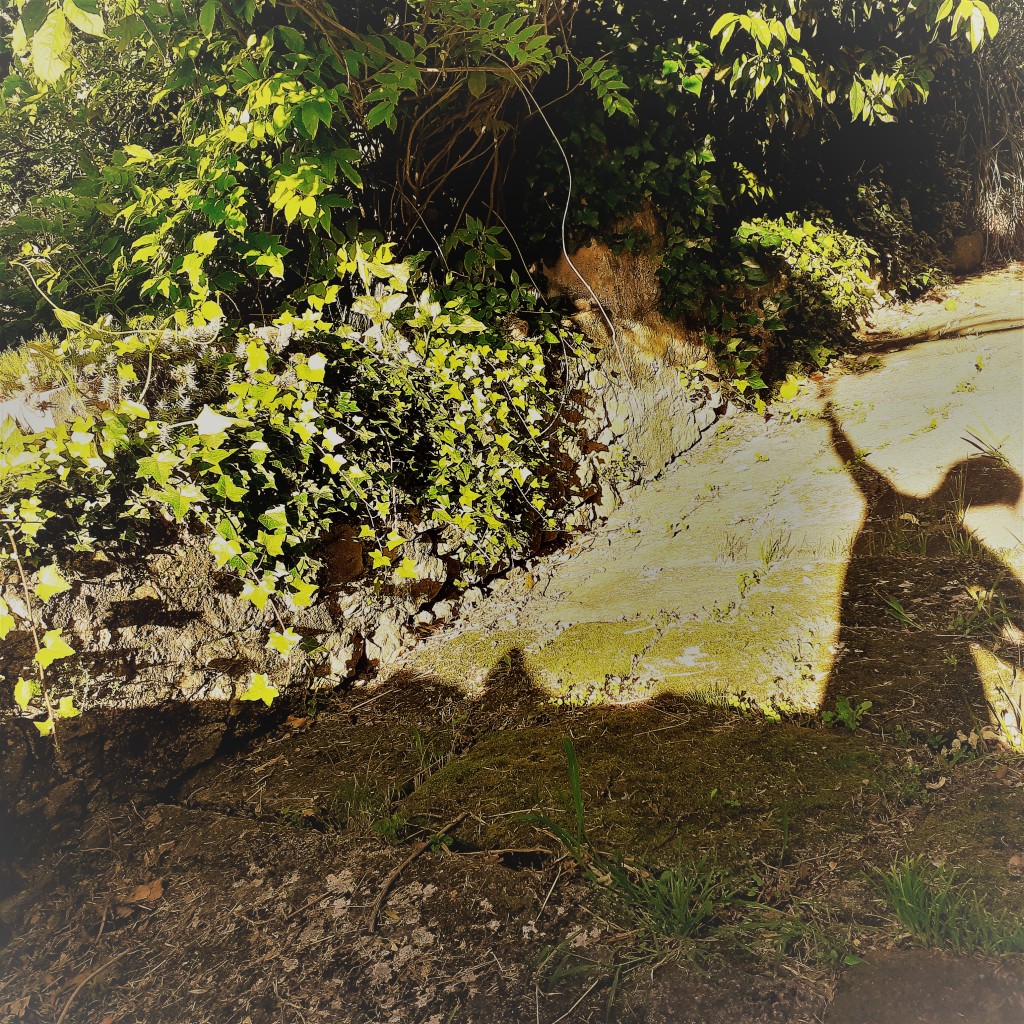
Readings:
How to land in an unstable ground, Ann Cooper Albright, Oxford Press, 2019
L’odeur du chlore, Irma Pelatan, La Contre Allée, 2020
La carte du monde dans ta tête, Lila Konomara, éditions KEDROS, 2018
Le corps pensant, Mabel Todd, éditions Contredanse,
Notre Corps, une exploration de l’infini, Question de n° 3, éditions Albin Michel
Online references:
Lucretius, De natura Rerum
http://www.trigofacile.com/jardins/muses/latin/lucrece/rerum-natura3c.htm
On artists in Greece
https://www.equaltimes.org/artists-in-greece-are-fighting-for?lang=en#.XyMq3326mEc
Nice video about the double slit experiment
https://www.youtube.com/watch?v=Q1YqgPAtzho
More on John Coplans
https://listart.mit.edu/exhibitions/john-coplans-body-parts-self-portrait
Music
The space between, Johanna Brouck
